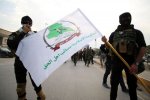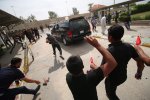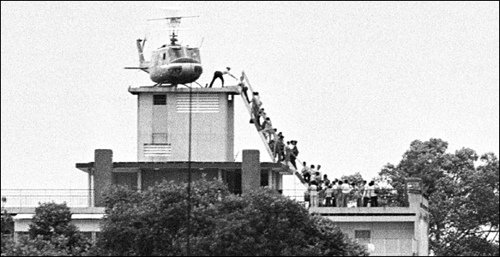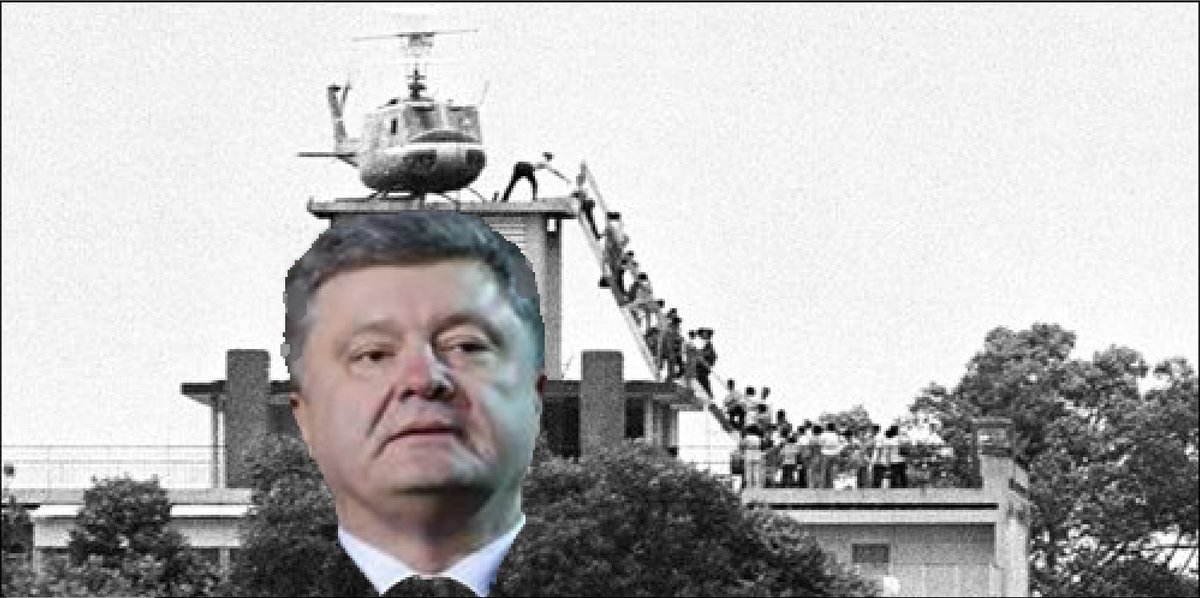For links see article source.....
Posted for fair use.....
http://thediplomat.com/2016/04/abno...l&utm_source=facebook.com&utm_campaign=buffer
(Ab)normal Nuclear Pakistan
Pakistan’s nuclear policy is a product of both mistrust toward the U.S. and threat perceptions vis-a-vis India.
By Sobia Paracha
April 27, 2016
Security threats from India and Pakistan-U.S. mistrust on nuclear non-proliferation are both important drivers of Pakistan’s nuclear policy and factors contributing to Pakistan’s dependence on nuclear weapons for defense and diplomacy. A recalibration of Pakistan’s nuclear policies would require enhanced trust in the United States and the non-proliferation regime. There is little that has been done by the two parties to enhance each other’s confidence. However, the recent statement given by President Barack Obama at the Nuclear Security Summit in Washington D.C., which pointed to both India and Pakistan as contributors to the nuclear dangers in South Asia, is a minor step in the right direction.
The Pakistan-U.S. mistrust is also reflected in the way discussions on making Pakistan a normal nuclear state were conducted in both Washington D.C. and Islamabad. The recent discussion in the U.S. on bringing Pakistan into nuclear mainstream (see, for example, this report by Toby Dalton and Michael Krepon) advocates an incremental approach that requires Islamabad to take measures like signing the Comprehensive Nuclear-Test-Ban Treaty (CTBT), helping initiate fissile material cut-off treaty (FMCT) negotiations, and adopting restraint in fissile material production and fielding short-range ballistic missiles (SRBM). The normalization debate emanating from the West assumes that an internal paradigm shift in security perceptions of Pakistan is possible or at least required. Pakistan’s policy of full spectrum deterrence is characterized as nuclear competition with India and the West has advocated restraint, yet the Pakistani position is that the country is only taking minimal steps for credibly deterring India.
Pakistan’s Nuclear Program and Minimal Deterrence
The debate over the Shaheen III missile provides an illustrative example. The logic behind the Shaheen III has been continuously questioned by the United States. It is officially stated to be a medium-range ballistic missile of 2,750 km. It allows Pakistan to target the complete landmass of India, but does not enhance deterrence capabilities substantially more than the Shaheen II.
Advisor to National Command Authority Gen. (ret.) Khalid Kidwai, however, has mentioned that Shaheen III‘s main purpose is to take away India’s second strike capability. This rationale has implications for deterrence stability. However, it also overestimates Pakistan’s current capabilities. Countering India’s second strike capability would require Pakistan to develop very precise, real time, counter-force targeting capabilities, which is not possible without an advanced space program and early warning capability.
Interestingly, the disproportionate developments in all dimensions of India’s nuclear program are either overlooked or played down.
The U.S. concerns over the Shaheen III are not as clear-cut as they are in the case of Pakistan’s tactical nuclear weapons (TNWs) or the rate of fissile material production. A report in the Wall Street Journal stated that the United States is generally concerned about any Pakistani missiles that could hit targets beyond India. Pakistan’s nuclear doctrine specifically is Indo-centric. Yet why does the total lack of intent not reassure the United States? Another possible concern is that there might be a technology creep associated with the Shaheen III, which could lead to other more advanced and lethal technologies.
A more balanced view would be to take Shaheen III as a precursor to the development of Pakistan’s indigenous space launch capability. Pakistan, like any other nation, has a legitimate right to space technology development. And although the technology is of dual nature, U.S. concerns are not justified for two reasons. First, with its current specifications it is too soon to question Shaheen III as a possible irritant to strategic stability or a threat to countries beyond South Asia. Second, India has much more advanced ballistic missiles, ballistic missile defense systems, and space programs in place.
Adding to the mistrust, there is an over-simplification and over-emphasis on the Pakistani nuclear program when it is labelled as one of the fastest growing in the world. This is seen in Pakistan to be aimed more at pressuring Pakistan diplomatically than to resolving genuine nonproliferation concerns. For instance, speculations about Pakistan having 350 warheads in the next decade are overstated, as Pakistan does not have the capacity to produce that many weapons. The rate of growth is directly dependent on existing capability; Pakistan’s is miniscule compared to India and other nuclear weapons states.
This context is generally not provided in estimates of Pakistan’s future nuclear development, although the report by Dalton and Krepon relativizes the often mentioned rate of fissile material production by agreeing that India “seems” to have a relaxed posture but is much better placed in terms of nuclear materials and infrastructure to out-compete Pakistan in this domain as well. But it fails to highlight the rationale, however cynical, that Pakistan has for speeding up its plutonium production program.
The report also suggests that Pakistan should stop fissile material production. This demand should also be seen within the context of Pakistan-U.S. mistrust, in addition to Pakistan’s genuine concerns over India. Pakistan’s stockpile of fissile material and the number of nuclear weapons are correlated to the expansion of India’s missile capabilities, ballistic missile defenses, increasing early warning and surveillance capabilities, and the Cold Start Doctrine. Due to lack of strategic depth and India’s asymmetric advantage, Pakistan has chosen to prepare for a possible first strike in the future. To achieve this, Pakistan can either move toward a higher readiness level like India, which will have further implications for crisis stability, or increase the size of its inventory. As Zafar Khan has put it, “This should not be characterized as competition with India because it’s the minimum Pakistan has to do to keep its nuclear deterrence credible.” Also, the fear of the United States trying to commandeer Pakistan’s nuclear weapons is probably accounted for in the quantitative requirements of the arsenal. Kidwai has explained, however, that the quantitative limit Pakistan envisions is not open-ended, because “beyond a certain number you lose the logic.”
The Fissile Material Cutoff Treaty
Pakistan’s stance about an FMCT in the Conference on Disarmament (CD) is the single clearest case of mistrust vis-à-vis the nonproliferation regime. Pakistan is single handedly blocking the process by disagreeing to the CD agenda for talks, which is basically a procedural issue. A realistic view of the policy discussions on FMCT will foresee a fair chance of states coming up with diverging issues related to the scope and verification procedures — once Pakistan lifts its veto from the CD agenda. In other words, Pakistan could easily share the blame of obstructing FMCT negotiations with countries like India and Israel, if it had the slightest bit of faith in the process. These broader disagreements will only prolong and possibly stalemate the process again. The FMCT will effectively have no implications for the rate of fissile material production of Pakistan in the short term.
At a later stage, if the discussions translate into a treaty, Pakistan can avoid signing it if it does not suit its national interests. India did exactly the same thing with the CTBT. However, the Pakistani decision makers think this will become a slippery slope for Pakistan; they worry the country will be victimized again by undue diplomatic pressure from the non-proliferation regime. For this reason, they believe nothing can be left to chance and have accepted the current diplomatic backlash as a reasonable price for national security.
In Pakistan, requiring signature of the CTBT as a condition for nuclear normalization is seen as totally impractical. It has been argued that Pakistan should sign CTBT before India; this will improve Pakistan’s non-proliferation credentials and it will also help to increase pressure on India to sign the treaty. Dalton and Krepon also suggest that if India resumes testing Pakistan can withdraw from CTBT. But apart from technical reasons — the requirement to abide by the provisions of a treaty once signed according to the Vienna Convention on the Law of Treaties and the prolonged treaty withdrawal procedures — Pakistani decision makers would naturally be wary of the enormous pressure they will have to endure for keeping a hypothetical CTBT commitment, even if India surprises the world by resuming tests.
Short-range Ballistic Missiles
Signing on to the CTBT or FMCT are not international norms. Different countries like the United States, India, and Israel, whose policies do not correlate with the FMCT or who have not signed or ratified CTBT, are still very well integrated in the nuclear order (or have a much better chance to be integrated than Pakistan). The production of fissile material should not be an issue of international concerns if Pakistan has a sufficient safety and security infrastructure in place because its current and projected stockpiles are very small as compared to other nuclear weapon states and even non-nuclear weapons states. As for the CTBT, Pakistan already observes a unilateral moratorium on testing, like many other nuclear states, and will only resume testing if India does. At the moment, the development of SRBMs is the most contentious issue of Pakistan’s nuclear policy.
Pakistan deterrence capability at longer ranges, for counter-value strikes had already been established and is strengthened by Shaheen III. Full spectrum deterrence (FSD) ushered in the development of short-range missiles and low-yield weapons.
Still, Pakistan’s Nasr tactical ballistic missile is of limited utility against a conventional attack without the pre-delegation of command and control. Pre-delegation is out of the question, as Pakistan’s top leaders exercise strict control over nuclear weapons. And due to its short range (60 km), Nasr will have to be used early on in a war, which has separate implications for crisis escalation and stability. Even though Nasr is characterized as a weapon of peace by Kidwai, it will make nuclear exchange more likely once war breaks out and it is debatable whether Nasr will be able to deter an impending conventional attack, if India is prepared and motivated enough to fight a limited war.
However, for Pakistani nuclear decision makers Western concerns are mere ideas that deal with the psychology of deterrence and hopefully will never be put to test. Pakistan’s rationale is simple: that it has presented a capability and India must factor it into its overall nuclear deterrence strategy.
The Pakistani narrative since the India-U.S. deal in 2005 has been that the discriminatory behavior of international actors (especially that of United States) is creating national security problems for Pakistan by undermining deterrence stability. Pakistani analysts argued Islamabad should be accorded the same kind of deal. Yes, the high-tech cooperation that India is getting through the broader India-U.S. strategic partnership (not just the Nuclear Suppliers Group waiver) will challenge deterrence stability in South Asia in the long term by improving Indian missile, missile defense, and space technologies. Nevertheless, this is not the primary concern of defense planners in Rawalpindi today. For Pakistan, nuclear mainstreaming is more a symbolic issue than a core national security problem.
The real problem for Pakistan is not being considered an “abnormal” nuclear state. It is that conventional deterrence is being challenged by provocative doctrines like Cold Start, in which the India-U.S. nuclear deal is hardly a factor. Pakistan does not need an NSG waiver to tackle threats in the current domain. Pakistan’s strategic thinkers’ response — that Pakistan is a candidate for a nuclear deal but is not desperate for NSG membership given the conditions implied for nuclear mainstreaming — substantiates this argument.
The importance of nuclear diplomacy for Pakistan is exemplified in the extra efforts it made to communicate the measures it has been taking for the safety and security of its nuclear complex to the international community. Pakistan enhanced the safety and security infrastructure of its arsenal for its own good. However, being sensitive to the international concerns and inculcating a degree of transparency is a manifestation of the importance Pakistan sees in being considered a responsible nuclear state. It is yet not clear how much of this factors into Pakistan’s national security policy. But analysis of the way discussions on mainstreaming Pakistan into the nuclear order played out recently in Islamabad would lead to a safe guess that Pakistan will rely mostly on acquiring military power for its security, rather than enhancing its so called non-proliferation credentials.
Sobia Paracha is a consultant with the Islamabad Policy Research Institute.
Posted for fair use.....
http://thediplomat.com/2016/04/abno...l&utm_source=facebook.com&utm_campaign=buffer
(Ab)normal Nuclear Pakistan
Pakistan’s nuclear policy is a product of both mistrust toward the U.S. and threat perceptions vis-a-vis India.
By Sobia Paracha
April 27, 2016
Security threats from India and Pakistan-U.S. mistrust on nuclear non-proliferation are both important drivers of Pakistan’s nuclear policy and factors contributing to Pakistan’s dependence on nuclear weapons for defense and diplomacy. A recalibration of Pakistan’s nuclear policies would require enhanced trust in the United States and the non-proliferation regime. There is little that has been done by the two parties to enhance each other’s confidence. However, the recent statement given by President Barack Obama at the Nuclear Security Summit in Washington D.C., which pointed to both India and Pakistan as contributors to the nuclear dangers in South Asia, is a minor step in the right direction.
The Pakistan-U.S. mistrust is also reflected in the way discussions on making Pakistan a normal nuclear state were conducted in both Washington D.C. and Islamabad. The recent discussion in the U.S. on bringing Pakistan into nuclear mainstream (see, for example, this report by Toby Dalton and Michael Krepon) advocates an incremental approach that requires Islamabad to take measures like signing the Comprehensive Nuclear-Test-Ban Treaty (CTBT), helping initiate fissile material cut-off treaty (FMCT) negotiations, and adopting restraint in fissile material production and fielding short-range ballistic missiles (SRBM). The normalization debate emanating from the West assumes that an internal paradigm shift in security perceptions of Pakistan is possible or at least required. Pakistan’s policy of full spectrum deterrence is characterized as nuclear competition with India and the West has advocated restraint, yet the Pakistani position is that the country is only taking minimal steps for credibly deterring India.
Pakistan’s Nuclear Program and Minimal Deterrence
The debate over the Shaheen III missile provides an illustrative example. The logic behind the Shaheen III has been continuously questioned by the United States. It is officially stated to be a medium-range ballistic missile of 2,750 km. It allows Pakistan to target the complete landmass of India, but does not enhance deterrence capabilities substantially more than the Shaheen II.
Advisor to National Command Authority Gen. (ret.) Khalid Kidwai, however, has mentioned that Shaheen III‘s main purpose is to take away India’s second strike capability. This rationale has implications for deterrence stability. However, it also overestimates Pakistan’s current capabilities. Countering India’s second strike capability would require Pakistan to develop very precise, real time, counter-force targeting capabilities, which is not possible without an advanced space program and early warning capability.
Interestingly, the disproportionate developments in all dimensions of India’s nuclear program are either overlooked or played down.
The U.S. concerns over the Shaheen III are not as clear-cut as they are in the case of Pakistan’s tactical nuclear weapons (TNWs) or the rate of fissile material production. A report in the Wall Street Journal stated that the United States is generally concerned about any Pakistani missiles that could hit targets beyond India. Pakistan’s nuclear doctrine specifically is Indo-centric. Yet why does the total lack of intent not reassure the United States? Another possible concern is that there might be a technology creep associated with the Shaheen III, which could lead to other more advanced and lethal technologies.
A more balanced view would be to take Shaheen III as a precursor to the development of Pakistan’s indigenous space launch capability. Pakistan, like any other nation, has a legitimate right to space technology development. And although the technology is of dual nature, U.S. concerns are not justified for two reasons. First, with its current specifications it is too soon to question Shaheen III as a possible irritant to strategic stability or a threat to countries beyond South Asia. Second, India has much more advanced ballistic missiles, ballistic missile defense systems, and space programs in place.
Adding to the mistrust, there is an over-simplification and over-emphasis on the Pakistani nuclear program when it is labelled as one of the fastest growing in the world. This is seen in Pakistan to be aimed more at pressuring Pakistan diplomatically than to resolving genuine nonproliferation concerns. For instance, speculations about Pakistan having 350 warheads in the next decade are overstated, as Pakistan does not have the capacity to produce that many weapons. The rate of growth is directly dependent on existing capability; Pakistan’s is miniscule compared to India and other nuclear weapons states.
This context is generally not provided in estimates of Pakistan’s future nuclear development, although the report by Dalton and Krepon relativizes the often mentioned rate of fissile material production by agreeing that India “seems” to have a relaxed posture but is much better placed in terms of nuclear materials and infrastructure to out-compete Pakistan in this domain as well. But it fails to highlight the rationale, however cynical, that Pakistan has for speeding up its plutonium production program.
The report also suggests that Pakistan should stop fissile material production. This demand should also be seen within the context of Pakistan-U.S. mistrust, in addition to Pakistan’s genuine concerns over India. Pakistan’s stockpile of fissile material and the number of nuclear weapons are correlated to the expansion of India’s missile capabilities, ballistic missile defenses, increasing early warning and surveillance capabilities, and the Cold Start Doctrine. Due to lack of strategic depth and India’s asymmetric advantage, Pakistan has chosen to prepare for a possible first strike in the future. To achieve this, Pakistan can either move toward a higher readiness level like India, which will have further implications for crisis stability, or increase the size of its inventory. As Zafar Khan has put it, “This should not be characterized as competition with India because it’s the minimum Pakistan has to do to keep its nuclear deterrence credible.” Also, the fear of the United States trying to commandeer Pakistan’s nuclear weapons is probably accounted for in the quantitative requirements of the arsenal. Kidwai has explained, however, that the quantitative limit Pakistan envisions is not open-ended, because “beyond a certain number you lose the logic.”
The Fissile Material Cutoff Treaty
Pakistan’s stance about an FMCT in the Conference on Disarmament (CD) is the single clearest case of mistrust vis-à-vis the nonproliferation regime. Pakistan is single handedly blocking the process by disagreeing to the CD agenda for talks, which is basically a procedural issue. A realistic view of the policy discussions on FMCT will foresee a fair chance of states coming up with diverging issues related to the scope and verification procedures — once Pakistan lifts its veto from the CD agenda. In other words, Pakistan could easily share the blame of obstructing FMCT negotiations with countries like India and Israel, if it had the slightest bit of faith in the process. These broader disagreements will only prolong and possibly stalemate the process again. The FMCT will effectively have no implications for the rate of fissile material production of Pakistan in the short term.
At a later stage, if the discussions translate into a treaty, Pakistan can avoid signing it if it does not suit its national interests. India did exactly the same thing with the CTBT. However, the Pakistani decision makers think this will become a slippery slope for Pakistan; they worry the country will be victimized again by undue diplomatic pressure from the non-proliferation regime. For this reason, they believe nothing can be left to chance and have accepted the current diplomatic backlash as a reasonable price for national security.
In Pakistan, requiring signature of the CTBT as a condition for nuclear normalization is seen as totally impractical. It has been argued that Pakistan should sign CTBT before India; this will improve Pakistan’s non-proliferation credentials and it will also help to increase pressure on India to sign the treaty. Dalton and Krepon also suggest that if India resumes testing Pakistan can withdraw from CTBT. But apart from technical reasons — the requirement to abide by the provisions of a treaty once signed according to the Vienna Convention on the Law of Treaties and the prolonged treaty withdrawal procedures — Pakistani decision makers would naturally be wary of the enormous pressure they will have to endure for keeping a hypothetical CTBT commitment, even if India surprises the world by resuming tests.
Short-range Ballistic Missiles
Signing on to the CTBT or FMCT are not international norms. Different countries like the United States, India, and Israel, whose policies do not correlate with the FMCT or who have not signed or ratified CTBT, are still very well integrated in the nuclear order (or have a much better chance to be integrated than Pakistan). The production of fissile material should not be an issue of international concerns if Pakistan has a sufficient safety and security infrastructure in place because its current and projected stockpiles are very small as compared to other nuclear weapon states and even non-nuclear weapons states. As for the CTBT, Pakistan already observes a unilateral moratorium on testing, like many other nuclear states, and will only resume testing if India does. At the moment, the development of SRBMs is the most contentious issue of Pakistan’s nuclear policy.
Pakistan deterrence capability at longer ranges, for counter-value strikes had already been established and is strengthened by Shaheen III. Full spectrum deterrence (FSD) ushered in the development of short-range missiles and low-yield weapons.
Still, Pakistan’s Nasr tactical ballistic missile is of limited utility against a conventional attack without the pre-delegation of command and control. Pre-delegation is out of the question, as Pakistan’s top leaders exercise strict control over nuclear weapons. And due to its short range (60 km), Nasr will have to be used early on in a war, which has separate implications for crisis escalation and stability. Even though Nasr is characterized as a weapon of peace by Kidwai, it will make nuclear exchange more likely once war breaks out and it is debatable whether Nasr will be able to deter an impending conventional attack, if India is prepared and motivated enough to fight a limited war.
However, for Pakistani nuclear decision makers Western concerns are mere ideas that deal with the psychology of deterrence and hopefully will never be put to test. Pakistan’s rationale is simple: that it has presented a capability and India must factor it into its overall nuclear deterrence strategy.
The Pakistani narrative since the India-U.S. deal in 2005 has been that the discriminatory behavior of international actors (especially that of United States) is creating national security problems for Pakistan by undermining deterrence stability. Pakistani analysts argued Islamabad should be accorded the same kind of deal. Yes, the high-tech cooperation that India is getting through the broader India-U.S. strategic partnership (not just the Nuclear Suppliers Group waiver) will challenge deterrence stability in South Asia in the long term by improving Indian missile, missile defense, and space technologies. Nevertheless, this is not the primary concern of defense planners in Rawalpindi today. For Pakistan, nuclear mainstreaming is more a symbolic issue than a core national security problem.
The real problem for Pakistan is not being considered an “abnormal” nuclear state. It is that conventional deterrence is being challenged by provocative doctrines like Cold Start, in which the India-U.S. nuclear deal is hardly a factor. Pakistan does not need an NSG waiver to tackle threats in the current domain. Pakistan’s strategic thinkers’ response — that Pakistan is a candidate for a nuclear deal but is not desperate for NSG membership given the conditions implied for nuclear mainstreaming — substantiates this argument.
The importance of nuclear diplomacy for Pakistan is exemplified in the extra efforts it made to communicate the measures it has been taking for the safety and security of its nuclear complex to the international community. Pakistan enhanced the safety and security infrastructure of its arsenal for its own good. However, being sensitive to the international concerns and inculcating a degree of transparency is a manifestation of the importance Pakistan sees in being considered a responsible nuclear state. It is yet not clear how much of this factors into Pakistan’s national security policy. But analysis of the way discussions on mainstreaming Pakistan into the nuclear order played out recently in Islamabad would lead to a safe guess that Pakistan will rely mostly on acquiring military power for its security, rather than enhancing its so called non-proliferation credentials.
Sobia Paracha is a consultant with the Islamabad Policy Research Institute.



















